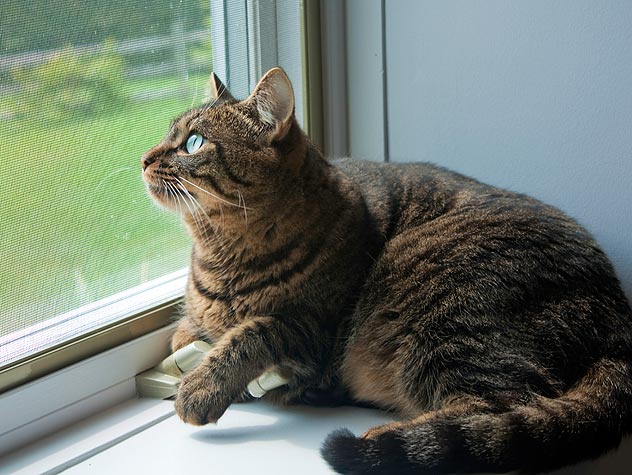The Facts Of Feline Lower Urinary Tract Disease
Feline lower urinary tract disease (FLUTD) is a common condition in cats, encompassing many disorders that affect the animal’s bladder or urethra. To avoid FLUTD, it is important that owners keep an eye on the bathroom habits of their furry friend to ensure that they are as happy and healthy as possible.
 Dr. Audrey Cook, a professor at the Texas A&M College of Veterinary Medicine & Biomedical Sciences, weighs in on the symptoms, causes, and treatments that owners should know about FLUTD.
Dr. Audrey Cook, a professor at the Texas A&M College of Veterinary Medicine & Biomedical Sciences, weighs in on the symptoms, causes, and treatments that owners should know about FLUTD.
FLUTD is a syndrome caused by a number of different underlying disorders; therefore, the range of symptoms is broad. Abnormal urination habits, including frequent urination, blood in urine, difficult or painful urination, and frequent “accidents” outside the litterbox may be indicative of a urinary tract disease.
These symptoms may arise from inflammation of the bladder or urethra, the presence of crystals or stones in the bladder, obstruction of the urethra, and more.
“Always seek veterinary care if your cat is straining to urinate but very little or no urine is passed,” Cook said, adding that your veterinarian will likely need to conduct an evaluation to determine the exact cause.
Owners concerned about their cat’s urination habits should consult their veterinarian as soon as possible, as FLUTD may cause more severe problems if left untreated.
“Although many cats with FLUTD will improve within a few days with symptomatic care, cats with this problem can become unable to urinate,” Cook said. “This is a medical emergency and must be addressed as soon as possible.”
Treatment will vary depending on the underlying cause but might involve medication, dietary changes, or surgical removal of stones.
Male cats are at a higher risk for urinary tract obstruction caused by FLUTD, such as bladder stones blocking their urinary tract, because their urethras are longer and narrower than those of female cats.
Additionally, this condition has a high rate of recurrence, as some cats are more prone to urinary disorders than others.
It is best practice for cat owners to ensure their pet’s litterbox is kept clean, that there are enough litterboxes for the number of cats in the household (at least one per cat, plus one additional litterbox), and that the cats always have access to fresh water.
Appropriate environmental enrichment may also help prevent FLUTD, since occurrence is higher in cats that are sedentary or obese.
Stress may also play a role in triggering a condition called idiopathic cystitis, a sterile inflammation of the bladder, which is one of the most common causes of abnormal urination in cats.
Although FLUTD may be a stressful experience for you and your cat, prompt and proper veterinary care can help keep your pet comfortable and happy.
Pet Talk is a service of the College of Veterinary Medicine & Biomedical Sciences, Texas A&M University. Stories can be viewed on the web at vetmed.tamu.edu/news/pet-talk. Suggestions for future topics may be directed to editor@cvm.tamu.edu.


